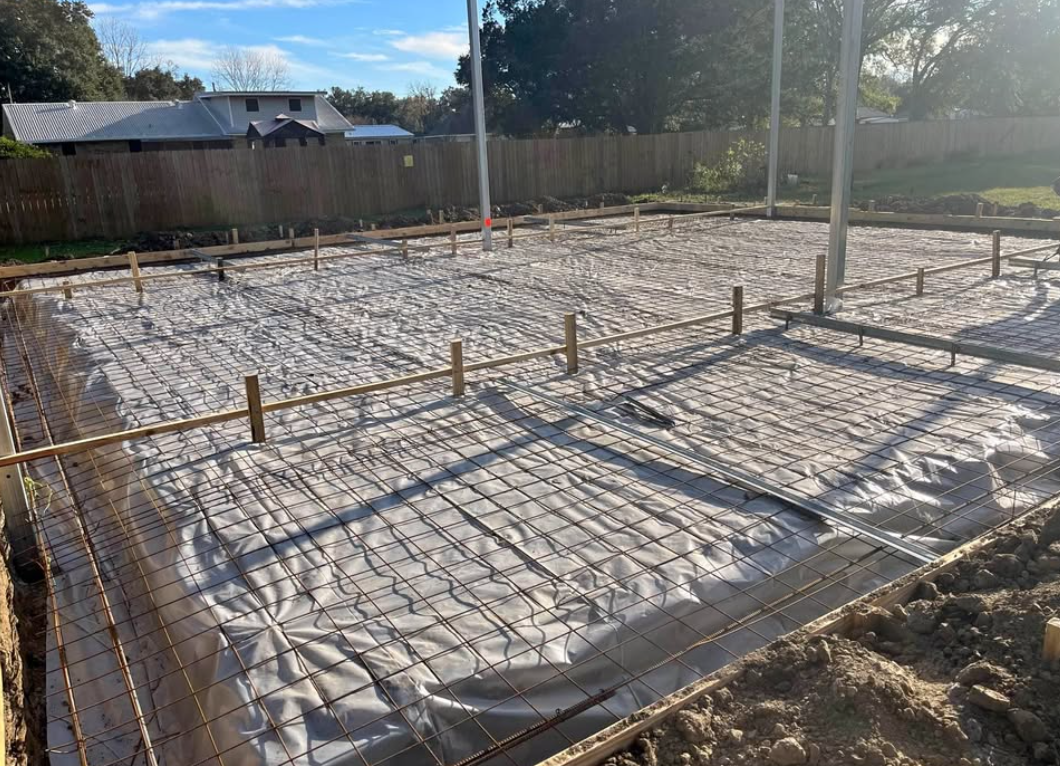Data Analytics in Construction: Decision-Making and Performance
13 Min read
)
August 13, 2023
In today's modern world, data is generated at an unprecedented rate. Industries across the board are harnessing its power to gain insights, make informed decisions, and improve overall performance. The construction industry is no exception. With its complex and multifaceted nature, construction projects generate a vast amount of data that can be leveraged to enhance decision-making and drive performance.
Understanding the Role of Data Analytics in Construction
The use of data analytics in construction has evolved over the years. Initially, data analysis was mainly focused on basic reporting and tracking project progress. However, the field has advanced significantly and now encompasses a wide range of functions that have a direct impact on decision-making and performance.
One of the key areas where data analytics has transformed construction is project management. In the past, project managers would collect data on project progress, costs, and schedules to monitor performance. However, as technology improved and more sophisticated tools became available, data analytics expanded to include predictive modeling, risk assessment, and performance optimization.
With the advent of advanced data analytics techniques, construction companies can now analyze vast amounts of data to gain valuable insights. For example, predictive modeling allows project stakeholders to forecast potential issues or delays before they occur. This proactive approach enables them to take corrective measures and ensure projects stay on track.
The Evolution of Data Analytics in Construction
Early on, data analytics in construction was primarily used for basic reporting purposes. Project managers would collect data on project progress, costs, and schedules to monitor performance. However, as technology improved and more sophisticated tools became available, data analytics expanded to include predictive modeling, risk assessment, and performance optimization.
Today, data analytics has become an integral part of construction project management. With the help of advanced algorithms and machine learning, construction companies can identify patterns and trends in project data that were previously difficult to detect. This enables them to make data-driven decisions and optimize project performance.
Furthermore, data analytics has also revolutionized risk assessment in construction. By analyzing historical data, stakeholders can identify potential risks and develop strategies to mitigate them. This proactive approach not only minimizes the likelihood of costly delays and errors but also improves overall project safety.
Key Functions of Data Analytics in Construction
Data analytics in construction serves several key functions. It enables project stakeholders to identify patterns, trends, and anomalies in project data. By analyzing historical data, stakeholders can make informed predictions about project outcomes and identify potential risks and opportunities.
Moreover, data analytics plays a crucial role in resource allocation. By analyzing data on labor, materials, and equipment usage, construction companies can optimize resource allocation and reduce waste. This not only improves project efficiency but also helps in cost control.
Additionally, data analytics assists in optimizing workflows. By analyzing data on project timelines and dependencies, construction companies can identify bottlenecks and inefficiencies in their processes. This allows them to streamline workflows and improve overall project productivity.
Lastly, data analytics in construction enables benchmarking performance against industry standards. By comparing project data with industry benchmarks, construction companies can assess their performance and identify areas for improvement. This helps them stay competitive in the market and deliver projects more effectively.
The Intersection of Data Analytics and Decision-Making
Effective decision-making is integral to the success of any construction project. Every choice made throughout the project's lifecycle can have a significant impact on its outcome. To ensure informed decision-making, project stakeholders rely on data analytics, which plays a crucial role in providing them with reliable and relevant insights.
By harnessing the power of data analytics, stakeholders can make data-driven decisions that are based on accurate and timely information. This enables them to identify areas of improvement, mitigate risks, and make strategic adjustments. The utilization of data analytics in construction projects helps to optimize the construction sequence, allocate resources efficiently, and schedule tasks effectively.
How Data Analytics Facilitates Informed Decision-Making
Data analytics empowers stakeholders by providing them with the necessary tools and techniques to analyze project data comprehensively. By leveraging advanced analytical methods, stakeholders can uncover hidden patterns, trends, and correlations within the data. This deeper understanding allows them to gain valuable insights that drive informed decision-making.
For example, data analytics can help determine the optimal construction sequence by analyzing historical project data. By examining previous projects with similar characteristics, stakeholders can identify patterns of success and failure, enabling them to make informed decisions about the best order in which to complete tasks. Resource allocation can also be optimized through data analytics, as stakeholders can analyze past performance and identify areas where resources were underutilized or overutilized, leading to more efficient allocation in future projects.
Furthermore, data analytics enables stakeholders to make accurate project scheduling decisions. By analyzing data on past project timelines and considering various factors such as weather conditions, material availability, and labor productivity, stakeholders can create realistic and achievable schedules. This helps to avoid delays, optimize resource utilization, and ensure that the project is completed on time and within budget.
Case Studies: Data-Driven Decision-Making in Construction
Multiple case studies have demonstrated the positive impact of data-driven decision-making in construction. These real-world examples highlight the transformative power of data analytics in optimizing various aspects of construction projects.
One notable case study involves a large construction firm that utilized data analytics to optimize the procurement process. By analyzing historical data on supplier performance, the firm was able to identify the suppliers with the highest performance and negotiate better terms. This data-driven approach resulted in significant cost savings for the company, as they were able to secure better deals and improve the efficiency of their procurement operations.
In another case, a construction company leveraged predictive analytics to identify potential risks and delays in a complex high-rise project. By analyzing various data sources, including weather patterns, labor productivity, and material availability, the company was able to proactively address issues before they escalated. This proactive approach helped them maintain project timelines, avoid costly disruptions, and deliver the project successfully.
These case studies demonstrate the power of data analytics in construction decision-making. By leveraging data-driven insights, stakeholders can optimize various aspects of their projects, leading to improved efficiency, cost savings, and successful project outcomes.
Enhancing Construction Performance through Data Analytics
Data analytics not only improves decision-making but also enhances construction performance by optimizing efficiency and reducing costs and risks. In this expanding digital age, the use of data analytics has become increasingly prevalent in the construction industry. By harnessing the power of data, construction companies can unlock valuable insights that drive better outcomes and propel projects to success.
Improving Efficiency and Productivity
Through data analytics, construction companies can identify bottlenecks and inefficiencies in their processes. By analyzing project data, stakeholders can streamline workflows, optimize resource allocation, and reduce unnecessary delays. Real-time data analysis also enables project teams to track progress and make proactive adjustments, ensuring projects stay on schedule and within budget.
For instance, by analyzing data on equipment usage and performance, construction companies can identify underutilized machinery or detect potential maintenance issues before they escalate. This allows for timely repairs or replacements, minimizing downtime and maximizing productivity. Furthermore, data analytics can also help optimize labor allocation by analyzing historical data on worker productivity and skill sets. This ensures that the right people are assigned to the right tasks, leading to increased efficiency and overall project success.
Reducing Costs and Risks
Data analytics helps identify potential cost-saving opportunities and minimize risks. By analyzing historical data and utilizing predictive modeling, stakeholders can identify areas where costs can be optimized and risks mitigated. For example, data analytics can provide insights into where materials can be procured at the best prices or highlight potential safety hazards that require preventative measures.
In addition, data analytics can assist in predicting project risks and implementing proactive measures to mitigate them. By analyzing data from previous projects, construction companies can identify patterns and trends that indicate potential risks, such as budget overruns or schedule delays. Armed with this knowledge, project teams can take preemptive actions to address these risks, ensuring smoother project execution and improved outcomes.
Moreover, data analytics can also play a crucial role in quality control. By analyzing data from various sources, such as inspections, testing, and customer feedback, construction companies can identify patterns and trends related to quality issues. This enables them to implement corrective measures promptly, ensuring that the final deliverables meet or exceed client expectations.
In conclusion, data analytics is revolutionizing the construction industry by providing valuable insights that enhance performance, efficiency, and cost-effectiveness. By harnessing the power of data, construction companies can optimize their processes, reduce risks, and deliver successful projects. As technology continues to advance, the role of data analytics in construction will only become more prominent, enabling even greater achievements in the built environment.
Challenges and Solutions in Implementing Data Analytics
While data analytics in construction offers numerous benefits, implementing it can pose certain challenges. However, these challenges can be overcome with the right approach and solutions. Two significant challenges in data analytics implementation are data integration and quality issues and privacy and security concerns.
Data integration and quality issues can hinder the effective implementation of data analytics in construction. Construction projects generate data from various sources such as sensors, equipment, and software systems. Integrating these diverse data sets can be complex, as they may have different formats, structures, and data types. However, the implementation of standardized protocols and the use of advanced data integration tools can help overcome this challenge. These tools can facilitate the seamless integration of data from different sources, ensuring that it can be effectively analyzed and utilized for decision-making purposes.
In addition to data integration, ensuring data quality is also vital for successful data analytics implementation. Construction data can be prone to errors and anomalies, which can significantly impact the accuracy and reliability of the analytics results. Regular data validation and cleansing processes should be in place to eliminate errors and anomalies. These processes involve identifying and rectifying data inconsistencies, removing duplicate or incomplete data, and performing data quality checks to ensure the integrity of the data used for analytics. By implementing robust data quality measures, construction companies can enhance the reliability and usefulness of their data analytics initiatives.
Overcoming Data Integration and Quality Issues
Construction projects involve a multitude of stakeholders, each generating and managing their own data. This decentralized nature of data collection can make the integration process challenging. However, by establishing strong collaboration and communication channels between stakeholders, data integration can be streamlined. Implementing standardized protocols and data exchange formats can ensure that data from different sources can be easily integrated, regardless of the software or systems used.
Furthermore, the use of advanced data integration tools and technologies can simplify the integration process. These tools can automatically extract, transform, and load data from various sources, eliminating the need for manual data manipulation. By leveraging these tools, construction companies can save time and resources while ensuring the accuracy and consistency of their integrated data.
Addressing Privacy and Security Concerns
With the ever-increasing volume of data being collected in the construction industry, ensuring data privacy and security is paramount. Construction companies need to establish robust data protection policies, including secure data storage, access controls, and encryption methods. By implementing stringent security measures, companies can safeguard their data from unauthorized access, manipulation, or theft.
Compliance with data privacy regulations is another crucial aspect of addressing privacy concerns in data analytics implementation. Construction companies need to stay updated with relevant data protection laws and regulations, such as the General Data Protection Regulation (GDPR) in the European Union. By ensuring compliance with these regulations, companies can build trust with their stakeholders and mitigate potential legal and reputational risks.
Ensuring data confidentiality is also essential for successful data analytics implementation. Construction companies should establish clear guidelines and protocols for data sharing and access. By limiting access to sensitive data and implementing strict authentication and authorization mechanisms, companies can prevent unauthorized individuals from accessing and misusing valuable construction data.
The Future of Data Analytics in Construction
Looking ahead, data analytics in construction is poised for further advancements. Emerging trends and technologies are expected to shape the future of the industry.
Data analytics has become an integral part of the construction industry, providing valuable insights and improving project management. As technology continues to evolve, new trends and technologies are emerging, paving the way for a more efficient and productive future.
Emerging Trends and Technologies
One of the emerging trends in data analytics is the increased use of Internet of Things (IoT) devices in construction. IoT devices, such as sensors and wearables, are being deployed on construction sites to collect real-time data. This data can be analyzed to monitor worker safety, track equipment usage, and optimize resource allocation. By harnessing the power of IoT, construction companies can make informed decisions and improve overall project performance.
In addition to IoT, the integration of artificial intelligence (AI) and machine learning (ML) technologies holds immense potential for the construction industry. These technologies can analyze large datasets, identify patterns, and provide valuable insights to enhance construction performance. For example, AI algorithms can analyze historical data to predict potential project delays, allowing construction managers to take proactive measures to mitigate risks and keep projects on track.
The Potential Impact of AI and Machine Learning
AI and machine learning have the potential to revolutionize the construction industry. With their ability to analyze massive amounts of data and make accurate predictions, they can optimize construction processes, improve safety, and minimize risks.
One area where AI and machine learning can have a significant impact is in the realm of predictive maintenance. Traditional maintenance practices in construction often rely on scheduled inspections and reactive repairs. However, with AI-powered predictive maintenance systems, construction companies can detect equipment failures in advance. By analyzing real-time data from IoT devices and historical maintenance records, AI algorithms can identify patterns and predict potential equipment failures. This allows construction companies to schedule maintenance activities proactively, preventing costly downtime and ensuring continuous project progress.
Furthermore, AI and machine learning can also improve safety on construction sites. By analyzing data from wearable devices and sensors, AI algorithms can detect potential safety hazards and alert workers in real time. This proactive approach to safety can prevent accidents and injuries, creating a safer working environment for construction workers.
In conclusion, the future of data analytics in construction looks promising. With emerging trends such as IoT and the integration of AI and machine learning, the industry is set to become more efficient, productive, and safe. By harnessing the power of data analytics, construction companies can make informed decisions, optimize processes, and drive innovation in the industry.
Conclusion
Data analytics in construction is transforming the industry by enabling informed decision-making and enhancing overall performance. By analyzing project data, stakeholders can identify patterns, risks, and opportunities, leading to improved efficiency, reduced costs, and increased productivity. While challenges exist, solutions such as data integration tools and stringent data security measures can overcome them. As emerging technologies such as AI and machine learning gain traction, the future of data analytics in construction holds immense potential for innovation and advancement.

Caleb Woods is an experienced content specialist and an editor at Boom & Bucket, blending his journalism background with expertise in the heavy equipment industry. He delivers engaging, informative content to help professionals stay informed and make smarter decisions in the machinery market.














